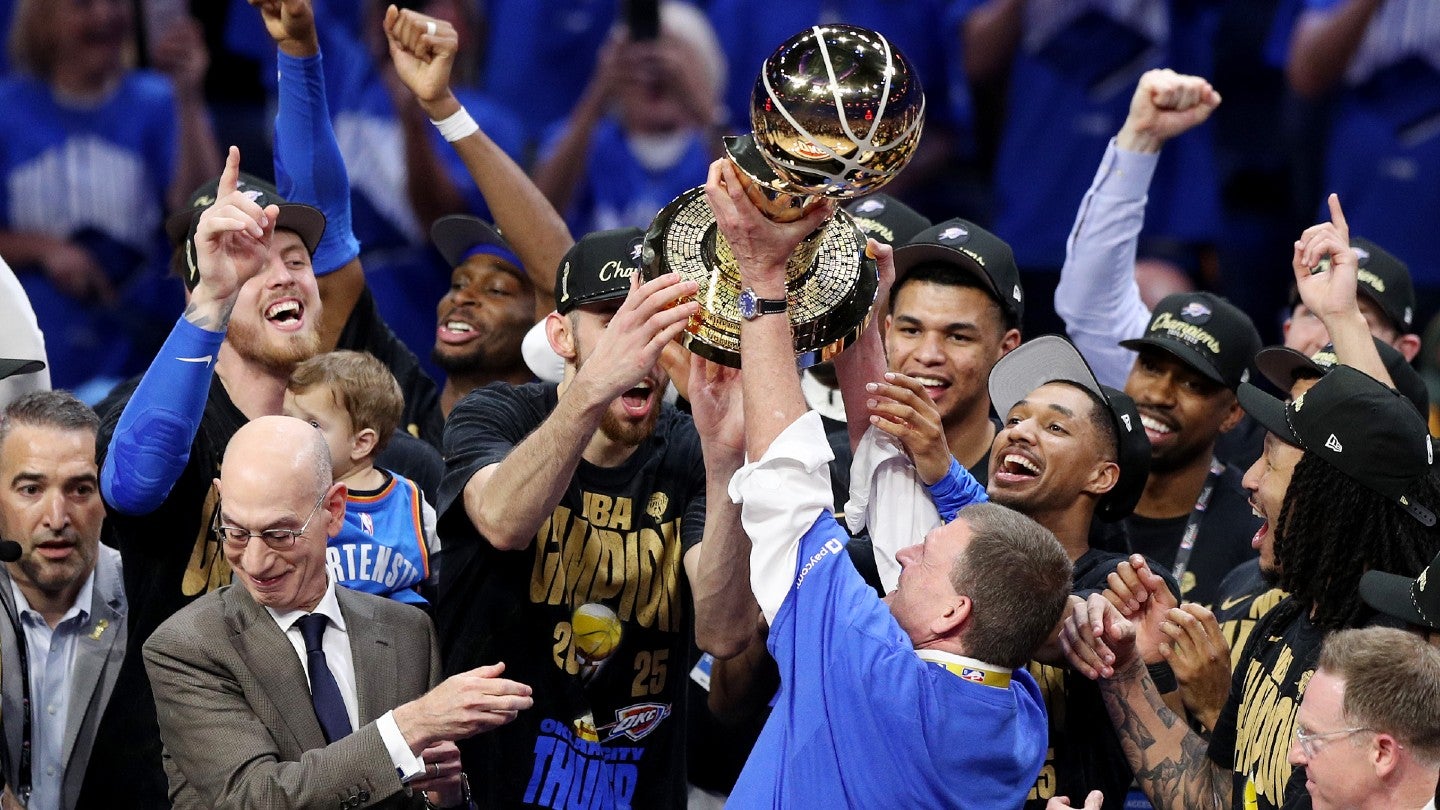
The US’ elite National Basketball Association (NBA) is has once again increased its salary cap ahead of the 2025-26 campaign.
Having come into force earlier today (July 1), the new per-team salary cap has been set at $154.647 million, while the minimum team salary is $139.182 million.

Discover B2B Marketing That Performs
Combine business intelligence and editorial excellence to reach engaged professionals across 36 leading media platforms.
This is a 10% increase on the 2024-25 campaign’s limit, which is the maximum increase allowed.
The NBA has also increased the Luxury Tax level, the line after which a hefty tax is enforced on teams that break the salary cap significantly, with $187.895 million serving as the new level.
Additionally, the first and second tax apron levels, two even more stringent penalty levels for excessive spending, have been set at $195.945 million (first apron) and $207.824 million (second apron).
Breaching those aprons is liable to put even the richest franchises in sever financial harm, and as such the NBA has already seen a flurry of trades after the window opened on June 30 as franchises scramble for roster compliance.

US Tariffs are shifting - will you react or anticipate?
Don’t let policy changes catch you off guard. Stay proactive with real-time data and expert analysis.
By GlobalDataIt has been reported that a further salary cap raise for the 2026-27 season, will only come to 7%, bringing the total to $165.5 million.
Given that the salary cap increase a season from now is likely to be lower than what is possible, it is likely that teams will continue to struggle with tax apron compliance over the coming years, especially given that players receiving contract extensions are, per the NBA’s collective bargaining agreement, entitled to raises of 8%.
This means the league is likely to see more blockbuster trades, with all-star rosters broken up as even championship contender franchises strive to sit below the second apron.
Commercially, this may affect the power of certain franchises to attract brand partnerships if their biggest stars become unaffordable and leave, especially for overseas stars who may command international brands to follow them to their new destinations.
This is best exemplified by the Dallas Mavericks franchise, which attempted to secure sponsorship deals with brands that were partnered with former star Luka Doncic, only for those brands to decline after his controversial trade to the Los Angeles Lakers.
Alternatively, smaller franchises that are less at risk of salary cap violations will now be better placed to attract high-profile players, in turn giving them a chance to boost their commercial profiles.
While the NBA’s new salary cap is far below the record $279.2 million that the National Football League put in place for the 2025-26 season, the sheer size of NFL rosters, which exceed 53 players, compared to NBA rosters which are capped at 15, means that the average wage in the NBA is multiple times higher.
The average annual NBA salary at the moment is in the region of $11 million to $12 million. By comparison, the average NFL salary is around $3 million, highlighting the pay disparity between the US’ two biggest sports leagues.



